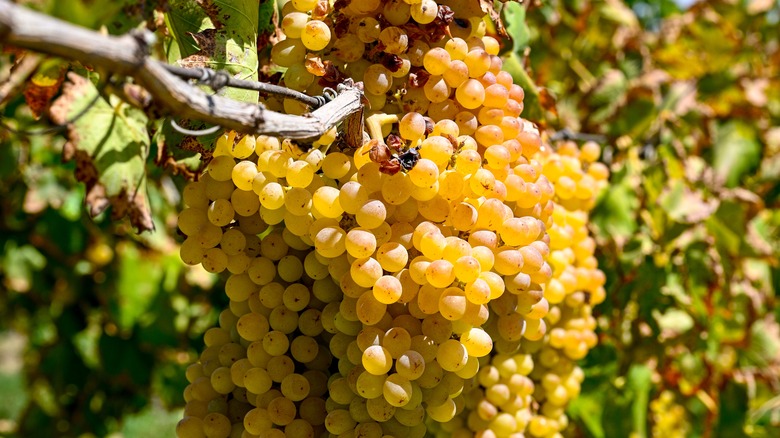If you would’ve asked me if I wanted seedless grapes at any point during my childhood (or adulthood for that matter), I would’ve responded … “Who would want to eat the other kind?” In the eyes of many, seeded grapes are relics of a nearly forgotten past because of the convenience and modern prominence of the seedless varieties. Yet, shockingly, there’s still a dedicated group of shoppers who prefer seeded grapes to the seedless ones.
But why though? This faction of seeded grape supporters believe that these grapes have a richer and more robust flavor compared to their seedless counterparts. Perhaps the seeds can be annoying to deal with, but for these folks, it’s well worth it. After all, grape seeds — like that cloudy white bloom on grape skins — are perfectly natural and safe to consume. Some people also love to use seeded grapes to cook with, where the seeds can be strained out.
The belief is that it helps to leave behind bold, sweet juice that’s perfect for jams, jellies, and sauces. There are others who prefer to snack on them just as nature intended in all of their seeded glory. So, even though seedless grapes are ubiquitous, seeded varieties maintain a loyal fan base that values tradition, taste, and a bit of nostalgia. Some shoppers even taste-test grapes right there in the store before buying them, though this is not necessarily advised.
How seedless grapes are made
Obviously, grapes without any human intervention are seeded. However, we have figured out ways to make the desired seedless grape more prevalent through the natural process of selective breeding, where grape varieties with smaller, less developed seeds are cross-pollinated over generations. Then, cuttings (rather than seeds) of the most desirable varieties are propagated to maintain consistency. While one may think a geneticist would be involved, this process mainly relies on nature and time to produce seedless varieties.
Have you ever felt the tiny seeds inside of seedless grapes? If you have, these are called “vestigial seeds.” These are the leftovers from the original seeds that never quite developed. Though this process makes seedless grapes more convenient, there is a drawback … it negatively impacts their flavor. Seedless grape detractors argue that the selective breeding process prioritizes convenience over taste. For this reason, some people find seeded grapes to be sweeter, juicier, and more flavorful.
But the production of seedless grapes has produced generations of people who prefer seedless to seeded grapes, and they might not even know that they should have seeds in them in the first place. Seedless grapes have also transformed the way we snack on fruit, making grapes more accessible to kids and those who prefer a hassle-free experience. Just get a small bag of grapes and have at it! However, the flavor trade-off has kept seeded grapes relevant for purists who value taste over convenience. No matter what variety you prefer, always wash your grapes properly before eating them.

















